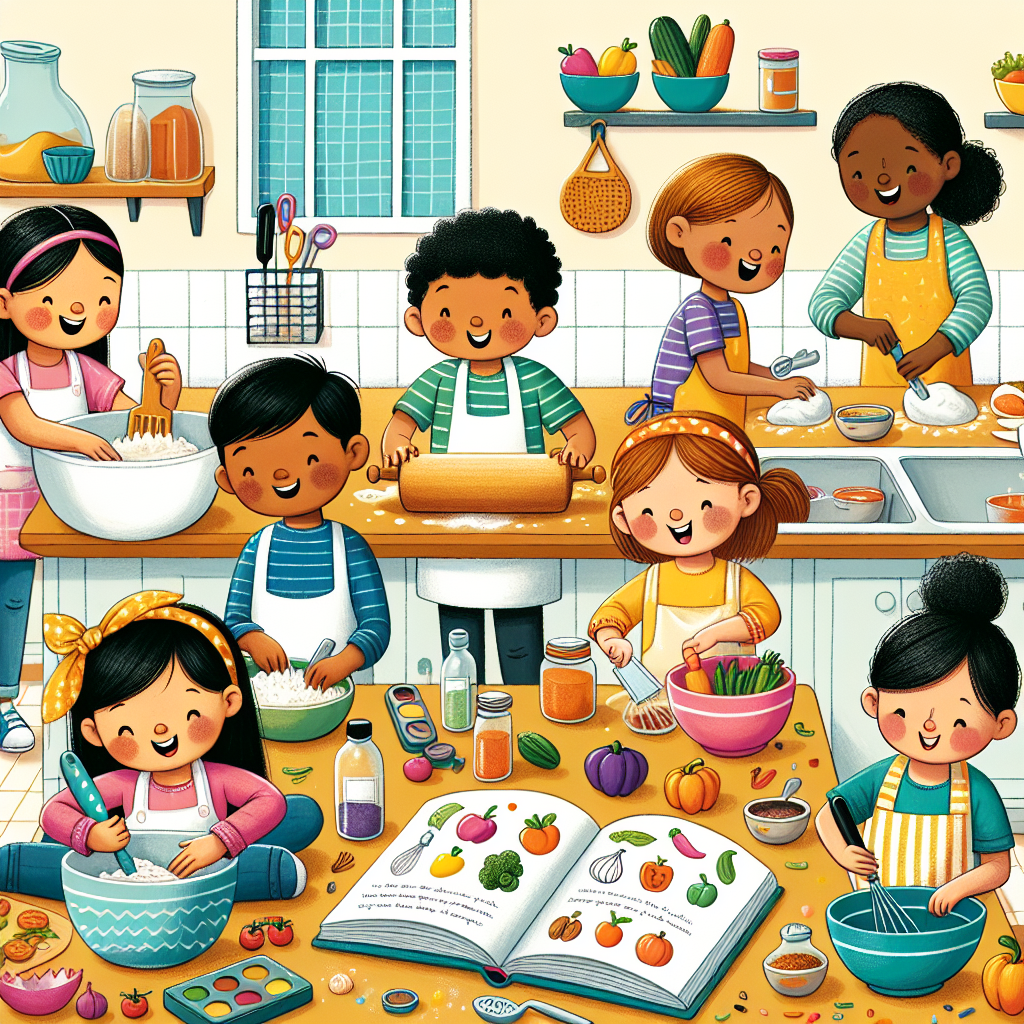Teaching kids to cook is more than just a fun way to spend time together; it’s an essential part of raising independent, confident, and health-conscious individuals. Cooking offers a plethora of learning opportunities, from math and reading skills to understanding nutrition and improving fine motor skills. Moreover, it encourages creativity, patience, and resourcefulness. Below, we explore some simple recipes designed for little hands, along with tips to make the cooking experience enjoyable and educational.
### **Why Teach Kids to Cook?**
Before we dive into the recipes, let’s consider why teaching kids to cook is important. Firstly, it’s a vital life skill. Being able to prepare one’s own meals is empowering and ensures that children won’t rely on unhealthy, processed foods in the future. Cooking together also strengthens familial bonds and can be a deeply satisfying collaborative effort. Additionally, kids are more likely to try new foods they’ve helped prepare, encouraging a diverse palate and better nutrition.
### **Getting Started: Setting the Stage for Success**
To embark on this culinary journey with your kids, consider a few foundational steps:
– **Safety First:** Always supervise and educate your children about kitchen safety, including handling sharp objects and understanding how to use appliances safely.
– **Age-Appropriateness:** Choose tasks and recipes that align with your child’s age and skill level. Younger children can start with washing fruits or stirring ingredients, while older kids can progress to chopping and using the stove with guidance.
– **Preparation:** Read through recipes beforehand, gather all necessary ingredients and tools, and ensure a clean, organized workspace to reduce stress and keep the focus on learning and fun.
### **Simple Recipes for Little Hands**
Here are three simple, tasty recipes to get your kids excited about cooking:
#### **1. Fruit Kabobs with Yogurt Dip**
– **Ingredients:** A selection of your child’s favorite fruits (e.g., strawberries, grapes, bananas, and melon), plain or vanilla yogurt, honey.
– **Instructions:** Have your child wash and prepare the fruits (with supervision, if needed). They can then thread pieces of fruit onto skewers. Mix a spoonful of honey into the yogurt for a sweet dip. This recipe is great for teaching kids about patterns and sequences, and it incorporates a tactile, playful element.
#### **2. Veggie Pita Pizzas**
– **Ingredients:** Whole wheat pita bread, tomato sauce, shredded cheese, various chopped vegetables (bell peppers, mushrooms, olives).
– **Instructions:** Preheat the oven to 375°F (190°C). Have your child spread tomato sauce over the pita bread, sprinkle cheese on top, and then decorate with vegetables. Bake for about 10 minutes. This recipe introduces children to the concept of cooking with heat and allows them to express their creativity.
#### **3. No-Bake Energy Balls**
– **Ingredients:** 1 cup oats, 1/2 cup peanut butter, 1/3 cup honey, 1/2 cup mini chocolate chips, 1/2 cup ground flaxseed.
– **Instructions:** Mix all the ingredients in a bowl. Let your child use their hands to roll the mixture into small balls. Refrigerate for at least 30 minutes before enjoying. This recipe is excellent for developing hand strength and coordination.
### **Tips for a Successful Cooking Experience**
– **Be Patient:** Mistakes and messes are part of the learning process. Emphasize the fun and exploration of cooking rather than perfection.
– **Involve Kids in the Planning:** Letting children choose recipes or ingredients empowers them and ignites their interest in cooking and food.
– **Use Teachable Moments:** Cooking offers myriad teachable moments, from discussing nutrition to practicing math skills with measurements.
– **Praise Effort:** Acknowledge your child’s efforts and contributions to encourage their ongoing interest in cooking.
### **FAQs**
**Q: At what age can I start teaching my child to cook?**
A: Children as young as 2 years old can begin helping in the kitchen with simple tasks like washing fruits and vegetables or stirring ingredients. Adjust recipes and tasks according to age and skill level for safety and enjoyment.
**Q: How can I make cooking educational for my child?**
A: Incorporate lessons on healthy eating, discuss where ingredients come from, practice math skills with measurements, and improve reading by following recipes together.
**Q: What if my child loses interest while cooking?**
A: Keep sessions short and engaging. If attention wanes, it’s okay to take breaks or focus on the parts of cooking they enjoy most. The goal is to foster a positive relationship with food and cooking.
**Q: My child is a picky eater. Will cooking help?**
A: Absolutely. Children who participate in the cooking process are often more willing to try new foods and flavors since they’ve invested their own time and effort.
**Q: Are there any resources for teaching kids to cook?**
A: Yes, there are many cookbooks, online resources, and cooking classes designed specifically for children. These can provide structured guidance and new ideas for kid-friendly recipes.
Teaching kids to cook is an investment in their future well-being and independence. It’s an activity that not only equips them with essential life skills but also fosters a sense of accomplishment and pride. By starting with simple recipes, respecting safety, and encouraging exploration, you can help cultivate a lifelong love of cooking and healthy eating in your children.

Leave a Reply